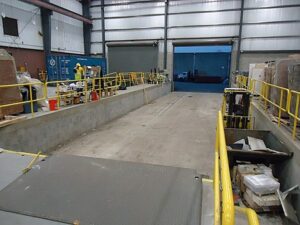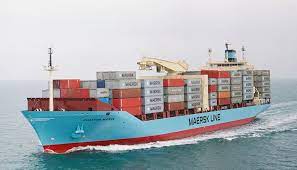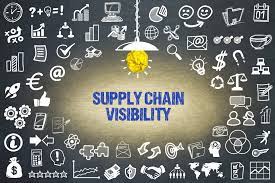Enhancing Operational Efficiency and Mitigating Supply Chain Risks through Supply Chain Visibility
Headings:
- Introduction
- Understanding Supply Chain Visibility
- Benefits of Supply Chain Visibility
- Case Studies
- Future of Supply Chain Visibility
Introduction:
The logistics industry is constantly evolving, with new technologies and strategies emerging to improve the movement of goods from point A to point B. One of the most critical elements of logistics is supply chain visibility. In this article, we will explore why supply chain visibility is essential in logistics, its benefits, and how companies can implement it successfully.

Why Supply Chain Visibility is Essential in Logistics:
Supply chain visibility refers to the ability to track the movement of goods from the point of origin to the final destination. This includes monitoring inventory levels, transportation, and storage conditions. There are several reasons why supply chain visibility is essential in logistics, including:
- Improved Efficiency: Supply chain visibility allows logistics companies to optimize their operations by identifying inefficiencies and bottlenecks. By having a complete view of the supply chain, companies can reduce transit times, minimize stockouts, and improve order fulfilment rates.
- Enhanced Customer Satisfaction: Supply chain visibility enables logistics companies to provide accurate and timely information to customers about their shipments. This not only increases transparency but also reduces customer anxiety and frustration, leading to improved customer satisfaction.
- Risk Mitigation: Supply chain visibility helps companies identify potential disruptions in the supply chain, such as natural disasters, port closures, and labour strikes. By anticipating these risks, companies can take proactive measures to mitigate their impact and minimize disruptions.
Benefits of Supply Chain Visibility:
The benefits of supply chain visibility extend beyond improved efficiency and customer satisfaction. Other advantages include:
- Increased Collaboration: Supply chain visibility promotes collaboration between different stakeholders, including suppliers, logistics companies, and customers. By sharing information and data, companies can identify areas for improvement and work together to optimize the supply chain.
- Better Inventory Management: Supply chain visibility enables companies to monitor inventory levels in real-time, helping to prevent stockouts and overstocks. This not only improves operational efficiency but also reduces costs associated with excess inventory.
- Improved Decision Making: Supply chain visibility provides companies with the data and insights needed to make informed decisions about the supply chain. By having a complete view of the supply chain, companies can identify trends, anticipate disruptions, and make proactive decisions that improve the overall performance of the supply chain.

Implementing Supply Chain Visibility:
Implementing supply chain visibility requires a coordinated effort across different stakeholders. Here are some key steps that companies can take to implement supply chain visibility successfully:
- Choose the Right Technology: There are many supply chain visibility solutions available, from GPS tracking to RFID tags. Companies should choose the technology that best suits their needs and budget.
- Establish Clear Processes: Companies should establish clear processes for collecting and sharing data. This includes defining data standards and establishing protocols for data sharing.
- Foster Collaboration: Supply chain visibility requires collaboration between different stakeholders. Companies should foster a culture of collaboration and establish regular communication channels to share information and feedback.
In today’s competitive logistics industry, supply chain visibility is no longer a nice-to-have but a must-have. By implementing supply chain visibility, logistics companies can improve their operational efficiency, enhance customer satisfaction, and mitigate supply chain risks. With the right technology, processes, and collaboration, companies can successfully implement supply chain visibility and reap its many benefits.

Case Studies: To illustrate the importance of supply chain visibility, let us examine two case studies.
- Walmart: In 2013, Walmart introduced a program called “Green Room” to improve supply chain visibility. The program involved the use of RFID tags on all products, enabling Walmart to track the movement of goods from the manufacturer to the store shelves. The program resulted in a 16% reduction in out-of-stock items and a 12% increase in sales.
- Maersk: Maersk, one of the world’s largest shipping companies, has implemented supply chain visibility to improve operational efficiency and reduce costs. Maersk’s supply chain visibility solution includes real-time tracking of shipments, automated alerts for potential delays, and data analytics to identify areas for improvement. The solution has resulted in a 10% reduction in transportation costs and a 20% reduction in manual processes.

Future of Supply Chain Visibility:
The future of supply chain visibility looks promising, with new technologies and strategies emerging to improve the tracking of goods. Here are some trends that we can expect to see in the future of supply chain visibility:
- Blockchain Technology: Blockchain technology is gaining popularity in logistics due to its ability to provide a secure and transparent way of tracking goods. With blockchain, all parties involved in the supply chain can access a shared ledger that records every transaction, improving transparency and reducing the risk of fraud.
- Artificial Intelligence (AI): AI is being used to improve supply chain visibility by providing real-time analytics and insights. AI-powered solutions can monitor and analyze data from multiple sources, enabling companies to make informed decisions about the supply chain.
- Internet of Things (IoT): IoT devices such as sensors and RFID tags are becoming more widespread in logistics, providing real-time tracking and monitoring of goods. With IoT, companies can track the location, temperature, and condition of goods, improving supply chain visibility and reducing the risk of damage or spoilage.
- Autonomous Vehicles: Autonomous vehicles such as drones and self-driving trucks are being developed to improve the speed and efficiency of transportation. With autonomous vehicles, companies can track goods in real-time and reduce the risk of human error.

Conclusion:
Supply chain visibility is a critical element of logistics. By enabling companies to track the movement of goods from the point of origin to the final destination, supply chain visibility improves operational efficiency, enhances customer satisfaction, and mitigates supply chain risks. With the right technology, processes, and collaboration, companies can successfully implement supply chain visibility and reap its many benefits. In today’s competitive logistics industry, supply chain visibility is no longer a luxury but a necessity.



